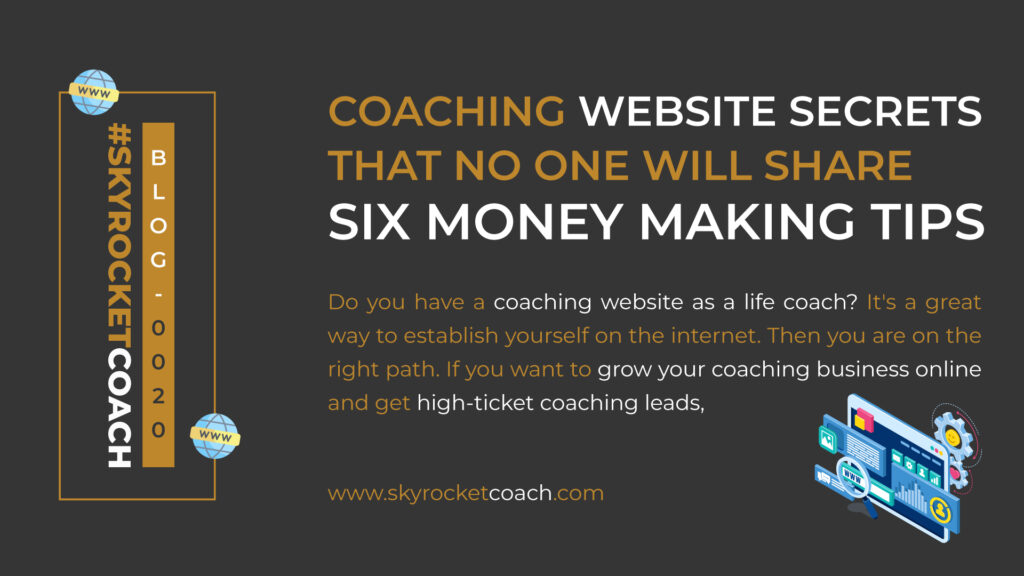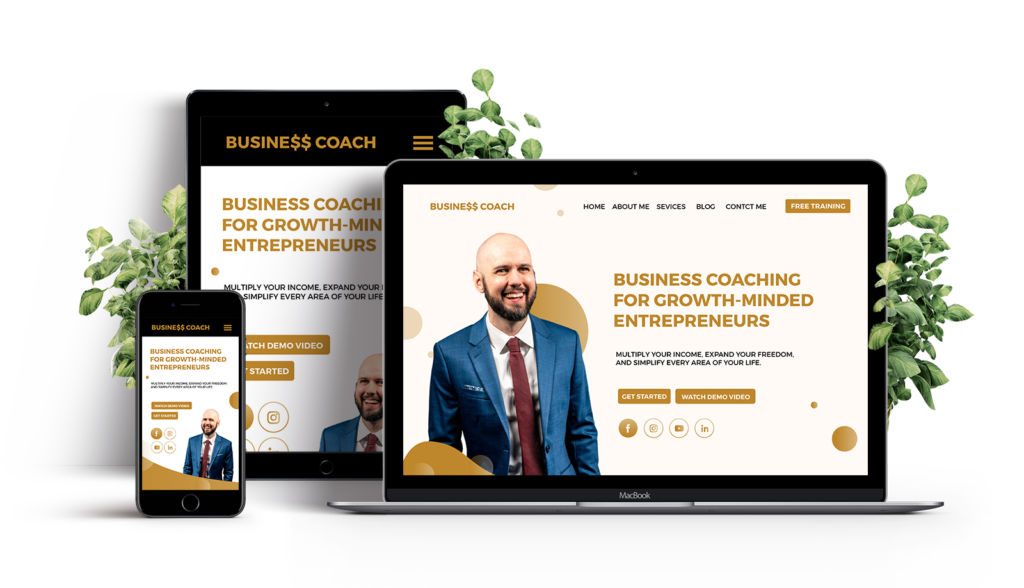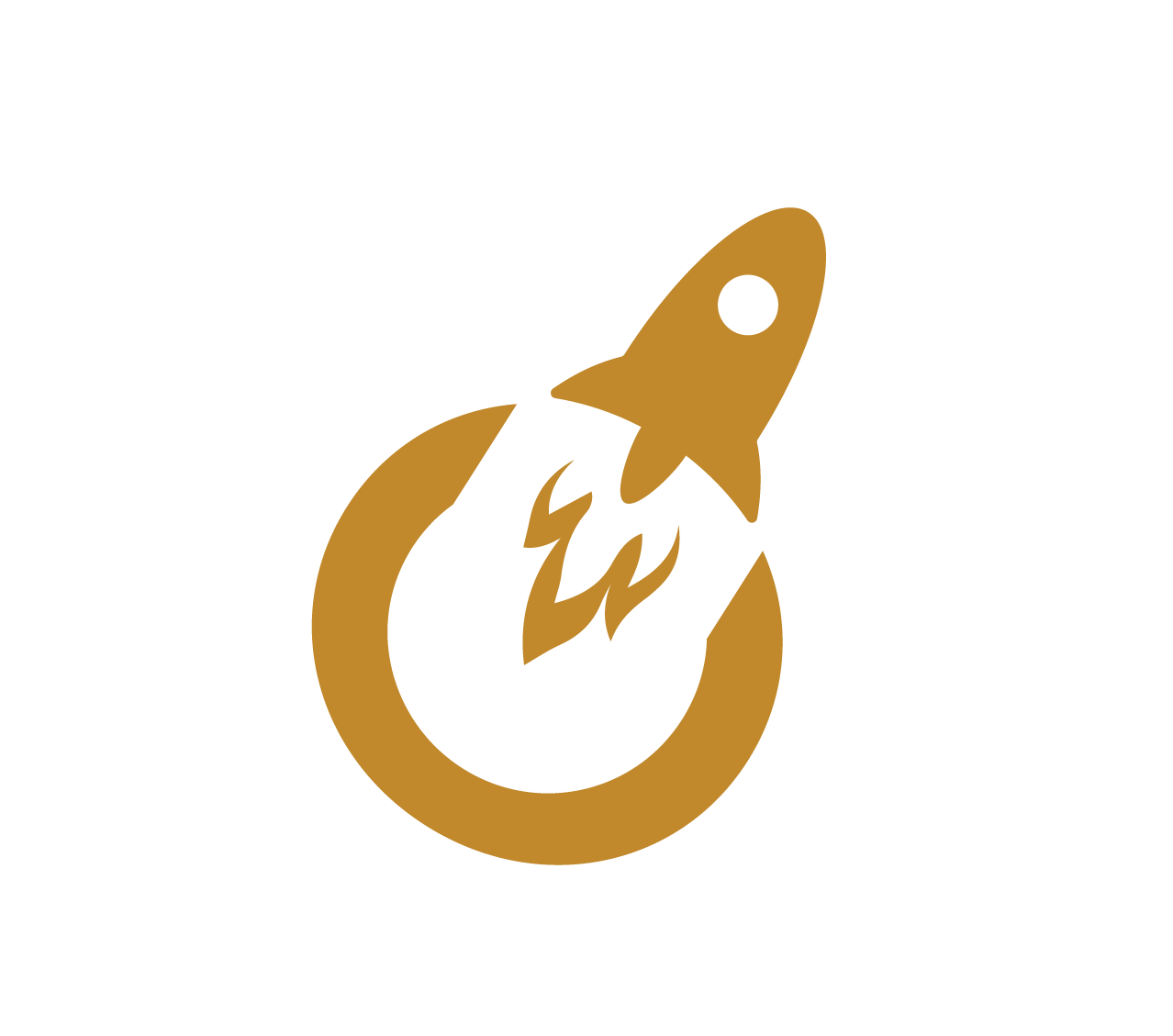Do you have a coaching website as a life coach? It’s a great way to establish yourself on the internet. Then you are on the right path. If you want to grow your coaching business online and get high-ticket coaching leads, you need a blog or website for that purpose. However, did you know that you can earn money while you sleep?
This blog post will talk about how you can have passive income from your coaching website and the steps you need to take to make money from your coaching website.
Table of Contents
What Exactly Is Passive Income from a Website?

There are many different ways to define passive income, and yes, I am aware of traditional methods like buying real estate and investing in the stock market. I do both things, but this website isn’t about them. Passive income for websites mainly comes from monetizing website traffic. such as Google Adsense and affiliate marketing.
Six practical ways to have passive income from your coaching website
There are many ways to have passive income from your coaching website. The best seven are given below.
Accepting Google AdSense

Google AdSense is a top contextual advertising network. The AdSense approval procedure has been straightforward: you register a new AdSense account, your account is examined, the AdSense staff accepts your application, and you can begin monetizing your coaching website.
Until the final clearance procedure is completed, the Google Ads will appear blank on your coaching blog. It may take up to two weeks for approval. Google will either pay you or wire your money if your account hits $100. For AdSense payments, I recommend that you allow direct bank transfer.
Affiliate marketing

Affiliate marketing has been around since before the Internet, but digital marketing, analytics, and cookies have helped it grow into a multibillion-dollar industry. Affiliate marketing is a pay-for-performance marketing strategy in which the selling is delegated to a large group of people. Affiliate marketing is beneficial to both the merchant and the affiliate.
Affiliate marketing is divided into unaffiliated, related, and involved. Since the affiliate doesn’t have any feelings about the potential customer, they don’t have to recommend or advise.
Both the advertiser and the affiliate marketer can benefit greatly from affiliate marketing. Low-cost advertising and the creative marketing efforts of its affiliates help the advertising company.
The advertising firm benefits from its affiliates’ creative marketing and low-cost advertising efforts. Affiliate marketing programs should be fully explained, especially if the contract pays for traffic instead of sales.
Amazon Associates can earn a commission of up to 10%. Affiliates on Etsy can promote other people’s products, but they can’t make money by selling their own.
eBay partners can earn commissions when a buyer buys an item within 24 hours of clicking on the eBay link on the coaching website.
Customers who buy within 24 hours of clicking an eBay purchase link on the coaching website can earn commissions for their affiliates at eBay.
Affiliate marketing is a type of advertising in which a company pays others to promote and sell its products. Commission rates vary according to the type of item sold and range from 1% to 4%. No more than $550 will be paid on any qualifying sale. Gift cards, charity items, and special promotions are not included.
Create a premium membership

Your coaching website can be monetized by creating a premium membership system. Members must pay a monthly subscription fee to use your site’s premium features. This can include exclusive blog posts, podcast episodes, videos, or even training videos.
There are many ways to create a membership site and restrict access to content that you don’t want everyone to see.
Developing an Online Training Program

You can monetize your education by creating an online coaching program on your website.
Making an online course isn’t difficult, but it takes time and effort to work properly. It can also be an excellent source of passive income once you’ve created the content and set everything up.
Many platforms, such as Udemy or Skillshare, allow you to host your course and make it easier for people to pay to view it. However, I always suggest using your website to give you more control and ownership over your course.
Post-Sponsored Content

Sponsored posts work in the same way that independent reviews do. You write a blog post about a specific topic and then mention a company, a product, or another type of resource related to the topic.
For example, a company that sells time-tracking software, for example, might approach you about writing a sponsored post for them. You could write a post about time management for remote workers and mention your company at the end.
Keep in mind that this will only work if you have significant traffic and an engaged audience. Once you’ve established yourself as an expert in your chosen field, you can charge a reasonable fee for sponsored pieces.
Create an E-Book

Writing an e-book (electronic book) is another way to market a specific skill set or expertise, similar to creating a digital course on a coaching website. The main difference is in the presentation of this information.
It is possible to view long-form text in book form on a computer, mobile device, or electronic book reader (such as the Kindle). These don’t need to be novel-length to be considered.
Things you need to monetize your coaching website
Create an easy-to-use UI.

User Interface Design is about figuring out what users might want to do and making sure that the interface’s parts are easy to find, understand, and use. The best interfaces are so simple that the user hardly notices them. They don’t have any extra parts and use clear language. When putting things on a page, it’s important to have a plan and think carefully about how they fit together. Use different sizes, fonts, and text to make things easier to scan and read. Color, light, contrast, and texture can draw attention to or away from things.
Optimize the coaching website’s SEO.

SEO is the exact process that helps you rank on Google, Bing, Yahoo, and other search engines for certain keywords or search queries. On-site SEO is mostly the work SEO experts do things on a website, like fixing technical problems, posting to a blog, making a sitemap, etc. Off-Site SEO is what SEO experts do to get a website to rank higher. This includes things like link building, backlinking, guest posting, etc. Organic traffic makes up about 53% of the traffic to Google search results. When you optimize your site for Google and follow its rules, your life coaching website will start to show up in the search results. Google is the largest and most popular search engine in the world.
Most people (92%) like to search on Google. Because they aren’t fully optimized, 90% of websites don’t show up in search engines. Because of this, SEO is important for life coaching websites. When you get a lot of organic traffic to your coaching website, you can use a lead magnet to organize and keep track of leads. “Lead” is a sales term that means getting in touch with potential customers who have shown an interest in your brand’s products or services.
With Google Analytics, you can find out how many people are coming to your website. And you should also know how people use your website. You have to optimize your content for search engines. If you don’t, your site won’t rank. Set up an account for Google Analytics and add it to your website. Set up your Google Analytics with goals and events that make sense for your business.
Connect your Google Search Console to your Google Analytics. Write blogs with lots of informative and interesting statistics for your coaching website. If you want to be a webmaster, you need to sign up for Google Search Console and Bing Webmaster Tools. This lets you tell search engines like Google or Bing about your website. Putting your website’s URL on your social media profile is important. Getting backlinks is an important part of ranking in search engines.
Publish your useful writing.

The process of writing content is to plan, write, and edit web content. It can include writing blog posts and articles; going through going to Writing blog posts and articles; going through scripts for videos and podcasts; tweetstorms on Twitter; and text posts on Reddit are all examples. We are going to go through scripts for videos and podcasts; tweetstorms on Twitter; and text posts on Reddit. An excellent first step in writing content is to outline. For example, let’s say you are going to write a post about the keto diet.
Whether you’re writing about how to make content or about cars, your writing needs to get people’s attention and keep it. And that starts with the content writing process, no matter what format you’re using—post with the statement in bold. Every day, 2.3 million blog posts go live, so you can’t just post something boring and expect many people to come. For your content marketing to work, your content needs to be very useful—post to the real world.
Final Thoughts
If you follow this guide, your coaching website will be able to generate a lot of revenue. In terms of the blog post, how was it? Post your thoughts in the comment box.
Frequently Asked Questions
1. How much money can you expect to make as a coach?
⇒ According to our research and conversations with ICF-certified professional flow coaches, a full-time trained life coach who works six to eight hours a day makes between $50 and $500 per hour and $70,000 to $600,000.
2. What is the ideal number of customers for a life coach?
⇒ The International Coach Federation says that active coaches now work with 11.7 clients at the same time. The average number of active customers for life coaches with more than ten years of expertise is 15. Life coaches with less than a year of experience, on the other hand, have an average of 6 clients.
3. What should a coach’s fee be?
⇒ Coaches charge an average of $200 per coaching hour across the world. Even if you opt to provide a discount, you don’t have to price much lower. According to coaching surveys, most professional coaches see only six clients every week.




Recent Comments